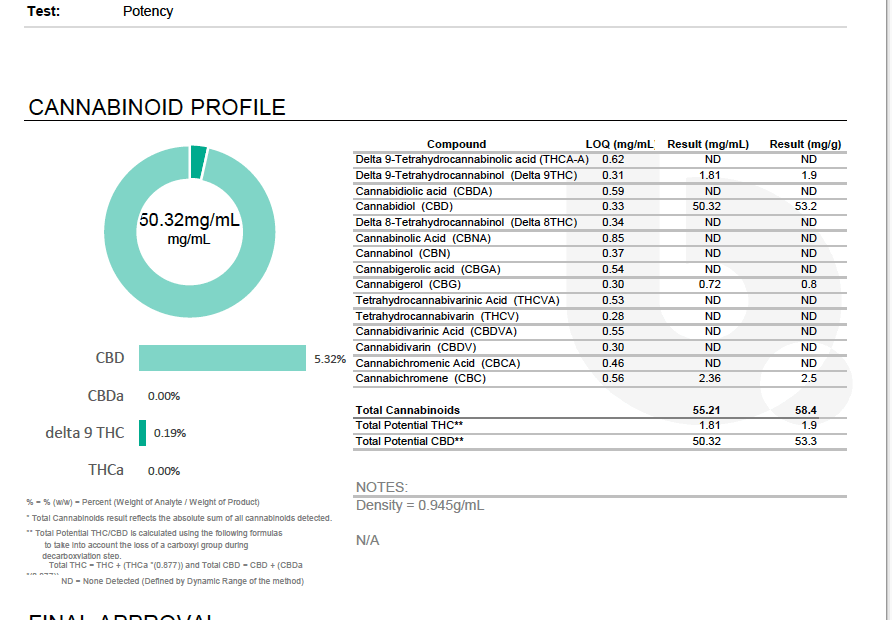What is a Certificate of Analysis? What is a third party lab report? How to read a COA? These several blogs will dive into analysis and how understanding the results is important for the cannabinoid consumer.
We discussed the most important analysis in the previous post: Cannabinoid profile. There are several other tests that are done on edible CBD extracts that we’ll now go over. Luckily, these are easy to understand.
- Residual solvents. In general, one does not want any solvents in the extract or tincture. The analysis report should read not detected or ND. Of course, some solvents are much more toxic than others. There is a difference between the toxicity of say butane and ethanol, with butane much worse than ethanol. In fact, pharmaceutical guidelines require very low levels of butane (in the parts per million), while ethanol is permitted up to 0.5 weight percent. Vermont Organic Science always will have ND for residual solvents, since the only solvent we use is ethanol, and we completely strip it off in the final extract.
- Heavy metals. This is a simple one. No heavy metals should be present. This includes things like lead, mercury and cadmium. Hemp/cannabis grown in contaminated soils with absorb these bad guys, since the plant is an efficient metal scavenger. At Vermont Organic Science, we only use Organic Hemp, so there is no chance for heavy metal contamination.
- Pesticides. Again, none should be detected. The processes that concentrate CBD from hemp also concentrates contaminates like pesticides. If the starting plant material has pesticides, then the concentrate will have more. By using Organic Hemp, Vermont Organic Science’s starting plant material contains NO pesticides, so no worry on this front. The dangers of pesticides.
- Microbial contamination. This is a measure of the bacteria load present in the sample. This test really is meant for flower samples that are meant to be smoked: one doesn’t want to be inhaling viruses and bacteria. For extracts done with ethanol, this is a bit of a silly test, since the ethanol destroys microbes (that is why it is used in hand sanitizer). Our process kills all bugs, so this isn’t an issue. We test for them anyway, and ND is the result.
Third party testing is needed to keep producers in line, and to confirm their label claims. We submit all finished product batches with the battery of these four tests, plus of course cannabinoid profile. This insures that you, the consumer, are getting exactly what you payed for.
I hope these blogs on reading a certificate of analysis helps with your cannabinoid purchases. And remember, quality comes first at Vermont Organic Science. Feel free to ask us any questions about how to read a COA, even if its a competitors!
